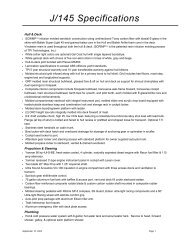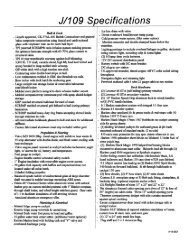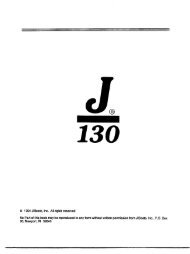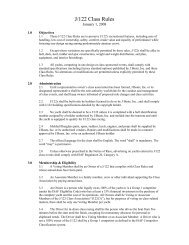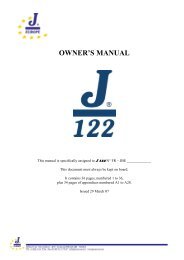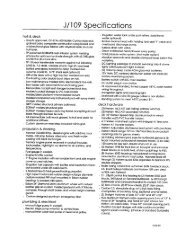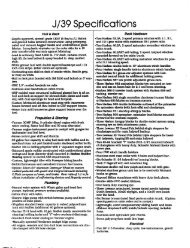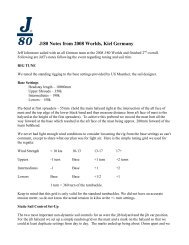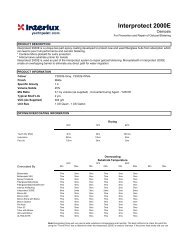J105 Owner Manual 2012.pdf - J/Owners
J105 Owner Manual 2012.pdf - J/Owners
J105 Owner Manual 2012.pdf - J/Owners
You also want an ePaper? Increase the reach of your titles
YUMPU automatically turns print PDFs into web optimized ePapers that Google loves.
J/105 <strong>Owner</strong> Guide ...................................................................................................................................................................................................................................................... 38 <br />
• Do not stow combustible material in the engine space. If non-‐combustible materials are <br />
stowed in the engine space, they shall be secured against falling into machinery and shall <br />
cause no obstruction to access into the space. <br />
Specific Warnings <br />
Never <br />
• Obstruct passageways to exits and hatches, <br />
• Obstruct safety controls, e.g. fuel valves, gas valves, switches of the electrical system, <br />
• Obstruct portable fire extinguishers stowed in lockers, <br />
• Leave the craft unattended when cooking and/or heating appliances are in use, <br />
• Modify any of the craft’s systems or allow unqualified personnel to modify any of the <br />
craft’s systems, <br />
• Fill any fuel tank when machinery is running, or when cooking or heating appliances are <br />
in use, <br />
• Smoke while handling fuel or gas. <br />
Lightning Protection <br />
The J/105 is grounded in accordance with ABYC and industry practice. The mast, shroud <br />
chainplates, stemhead fitting, backstay fitting, engine, and electrical system are grounded to the <br />
keel. In spite of this grounding, there can be no assurance that personnel or the boat will not <br />
suffer injury if the boat is hit by lightning. The following are suggestions only and in no way <br />
guarantee safety in the event of a lightning strike. <br />
• If possible, remain inside a closed boat during a lightning storm. Do not contact any <br />
metallic objects inside or outside the boat. <br />
• Avoid contact with any items connected to the lightning conductive system (mast, <br />
shrouds, etc) and especially in a manner to act as a bridge between them (mast to shroud, <br />
etc). <br />
• Avoid swimming during a lightning storm. <br />
• If the boat is mildly struck by lightning, check all compasses and electrical gear to <br />
determine that no damage or change in calibration has taken place. <br />
• Check all thru-‐hull fittings, keel bolts, engine rubber gasket membrane, for leakage <br />
(water).



